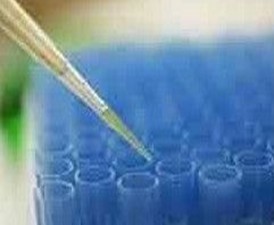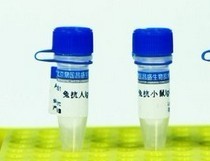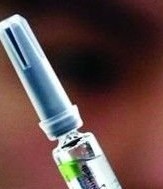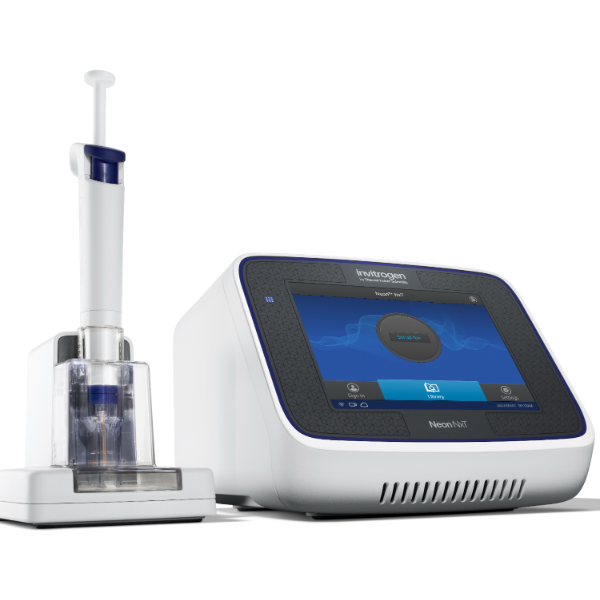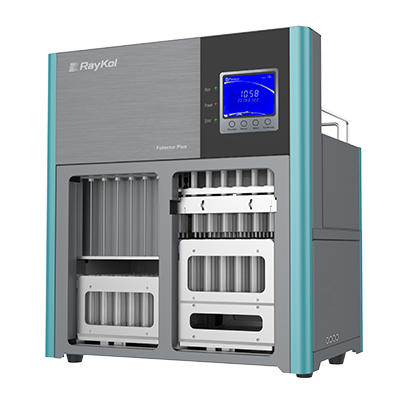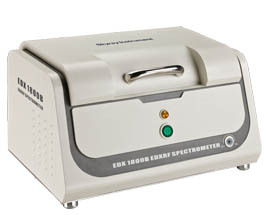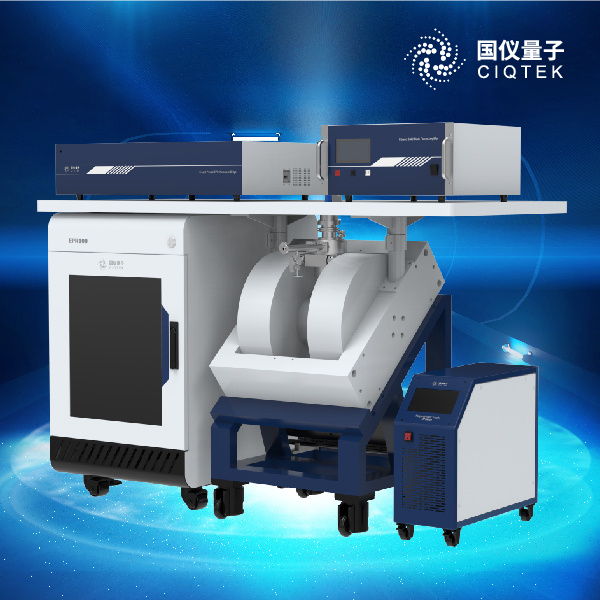本公司是最专业磷酸化非受体酪氨酸激酶c-Abl抗体供应商,提供磷酸化非受体酪氨酸激酶c-Abl抗体报价,磷酸化非受体酪氨酸激酶c-Abl抗体咨询,技术服务,欢迎来电咨询选购。
英文名称 Anti-phospho-c-Abl(Tyr412)
中文名称 磷酸化非受体酪氨酸激酶c-Abl抗体
别 名 c-Abl(phospho Y412); c-Abl(phospho Tyr412); p-c-Abl(Tyr412); Abelson Murine Leukemia Viral Oncogene Homolog 1; Abelson murine leukemia viral v abl oncogene homolog 1; Abl 1; ABL; Abl protein; Abl1; Bcr/c abl oncogene protein; JTK 7; JTK7; p150 ; Proto oncogene tyrosine protein kinase ABL1; Transformation gene oncogene ABL; v abl Abelson murine leukemia viral oncogene homolog 1; v abl; ABL1_HUMAN.
浓 度 1mg/1ml
规 格 0.1ml/100μg
磷酸化非受体酪氨酸激酶c-Abl抗体概述:
B淋巴细胞在抗原的刺激下,能够分化、增殖形成具有针对这种抗原分泌特异性抗体的能力。B细胞的这种能力和量是有限的,不可能持续分化增殖下去,因此产生免疫球蛋白的能力也是极其微小的。将这种B细胞与非分泌型的骨髓瘤细胞融合形成杂交瘤细胞,再进一步克隆化,这种克隆化的杂交瘤细胞是既具有瘤细胞的无限分裂的能力,又具有产生特异性抗体的B淋巴细胞的能力。将这种克隆化的杂交瘤细胞进行培养或注入小鼠腹水内即可获得大量的高效、单一的特异性抗体。这种技术即称为单克隆抗体技术。
抗体来源 Rabbit
克隆类型 polyclonal
交叉反应 Human, Mouse, Rat, Dog, Pig, Cow, Horse, Rabbit
产品类型 一抗 磷酸化抗体
研究领域 细胞生物 信号转导 细胞凋亡 激酶和磷酸酶 线粒体
蛋白分子量 predicted molecular weight: 124kDa
性 状 Lyophilized or Liquid
免 疫 原 KLH conjugated Synthesised phosphopeptide derived from human c-Abl soform b around the phosphorylation site of Tyr412
亚 型 IgG
纯化方法 affinity purified by Protein A
储 存 液 0.01M PBS, pH 7.4 with 10 mg/ml BSA and 0.1% Sodium azide
产品应用 WB=1:100-500 ELISA=1:500-1000 IP=1:20-100 IHC-P=1:100-500 IHC-F=1:100-500 IF=1:100-500
(石蜡切片需做抗原修复)
not yet tested in other applications.
optimal dilutions/concentrations should be determined by the end user.
保存条件 Store at -20 °C for one year. Avoid repeated freeze/thaw cycles. The lyophilized antibody is stable at room temperature for at least one month and for greater than a year when kept at -20°C. When reconstituted in sterile pH 7.4 0.01M PBS or diluent of antibody the antibody is stable for at least two weeks at 2-4 °C.
Important Note This product as supplied is intended for research use only, not for use in human, therapeutic or diagnostic applications.
产品介绍 The ABL1 protooncogene encodes a cytoplasmic and nuclear protein tyrosine kinase that has been implicated in processes of cell differentiation, cell division, cell adhesion, and stress response. Activity of c-Abl protein is negatively regulated by its SH3 domain, and deletion of the SH3 domain turns ABL1 into an oncogene. The t(9;22) translocation results in the head-to-tail fusion of the BCR (MIM:151410) and ABL1 genes present in many cases of chronic myelogeneous leukemia. The DNA-binding activity of the ubiquitously expressed ABL1 tyrosine kinase is regulated by CDC2-mediated phosphorylation, suggesting a cell cycle function for ABL1. The ABL1 gene is expressed as either a 6- or 7-kb mRNA transcript, with alternatively spliced first exons spliced to the common exons 2-11. [provided by RefSeq].
Function : Non-receptor tyrosine-protein kinase that plays a role in many key processes linked to cell growth and survival such as cytoskeleton remodeling in response to extracellular stimuli, cell motility and adhesion, receptor endocytosis, autophagy, DNA damage response and apoptosis. Coordinates actin remodeling through tyrosine phosphorylation of proteins controlling cytoskeleton dynamics like WASF3 (involved in branch formation); ANXA1 (involved in membrane anchoring); DBN1, DBNL, CTTN, RAPH1 and ENAH (involved in signaling); or MAPT and PXN (microtubule-binding proteins). Phosphorylation of WASF3 is critical for the stimulation of lamellipodia formation and cell migration. Involved in the regulation of cell adhesion and motility through phosphorylation of key regulators of these processes such as BCAR1, CRK, CRKL, DOK1, EFS or NEDD9. Phosphorylates multiple receptor tyrosine kinases and more particularly promotes endocytosis of EGFR, facilitates the formation of neuromuscular synapses through MUSK, inhibits PDGFRB-mediated chemotaxis and modulates the endocytosis of activated B-cell receptor complexes. Other substrates which are involved in endocytosis regulation are the caveolin (CAV1) and RIN1. Moreover, ABL1 regulates the CBL family of ubiquitin ligases that drive receptor down-regulation and actin remodeling. Phosphorylation of CBL leads to increased EGFR stability. Involved in late-stage autophagy by regulating positively the trafficking and function of lysosomal components. ABL1 targets to mitochondria in response to oxidative stress and thereby mediates mitochondrial dysfunction and cell death. ABL1 is also translocated in the nucleus where it has DNA-binding activity and is involved in DNA-damage response and apoptosis. Many substrates are known mediators of DNA repair: DDB1, DDB2, ERCC3, ERCC6, RAD9A, RAD51, RAD52 or WRN. Activates the proapoptotic pathway when the DNA damage is too severe to be repaired. Phosphorylates TP73, a primary regulator for this type of damage-induced apoptosis. Phosphorylates PSMA7 that leads to an inhibition of proteasomal activity and cell cycle transition blocks. ABL1 acts also as a regulator of multiple pathological signaling cascades during infection. Several known tyrosine-phosphorylated microbial proteins have been identified as ABL1 substrates. This is the case of A36R of Vaccinia virus, Tir (translocated intimin receptor) of pathogenic E.coli and possibly Citrobacter, CagA (cytotoxin-associated gene A) of H.pylori, or AnkA (ankyrin repeat-containing protein A) of A.phagocytophilum. Pathogens can highjack ABL1 kinase signaling to reorganize the host actin cytoskeleton for multiple purposes, like facilitating intracellular movement and host cell exit. Finally, functions as its own regulator through autocatalytic activity as well as through phosphorylation of its inhibitor, ABI1.
Subunit : Interacts with SORBS1 following insulin stimulation. Found in a trimolecular complex containing CDK5 and CABLES1. Interacts with CABLES1 and PSTPIP1. Interacts with ZDHHC16, ITGB1 and HCK (By similarity). Interacts with INPPL1/SHIP2. Interacts with the 14-3-3 proteins, YWHAB, YWHAE, YWHAG, YWHAH, SFN AND YWHAZ; the interaction with 14-3-3 proteins requires phosphorylation on Thr-735 and, sequesters ABL1 into the cytoplasm. Interacts with ABI1, ABI2, BCR, CRK, FGR, FYN, HCK, LYN, PSMA7 RAD9A, RAD51, RAD52, TP73 and WASF3. A complex made of ABL1, CTTN and MYLK regulates cortical actin-based cytoskeletal rearrangement critical to sphingosine 1-phosphate (S1P)-mediated endothelial cell (EC) barrier enhancement.
Subcellular Location : Cytoplasm, cytoskeleton. Nucleus. Mitochondrion. Note=Shuttles between the nucleus and cytoplasm depending on environmental signals. Sequestered into the cytoplasm through interaction with 14-3-3 proteins. Localizes to mitochondria in response to oxidative stress. Isoform IB: Nucleus membrane; Lipid-anchor. Note=The myristoylated c-ABL protein is reported to be nuclear.
Tissue Specificity : Widely expressed.
Post-translational modifications : Acetylated at Lys-711 by EP300 which promotes the cytoplasmic translocation.
Phosphorylation at Tyr-70 by members of the SRC family of kinases disrupts SH3 domain-based autoinhibitory interactions and intermolecular associations, such as that with ABI1, and also enhances kinase activity. Phosphorylation at Tyr-226 and Tyr-393 correlate with increased activity. DNA damage-induced activation of ABL1 requires the function of ATM and Ser-446 phosphorylation. Phosphorylation at Ser-569 has been attributed to a CDC2-associated kinase and is coupled to cell division. Phosphorylation at Ser-618 and Ser-619 by PAK2 increases binding to CRK and reduces binding to ABI1. Phosphorylation on Thr-735 is required for binding 14-3-3 proteins for cytoplasmic translocation. Phosphorylated by PRKDC.
Polyubiquitinated. Polyubiquitination of ABL1 leads to degradation.
Isoform IB is myristoylated on Gly-2.
DISEASE : Note=A chromosomal aberration involving ABL1 is a cause of chronic myeloid leukemia. Translocation t(9;22)(q34;q11) with BCR. The translocation produces a BCR-ABL found also in acute myeloid leukemia (AML) and acute lymphoblastic leukemia (ALL).
Similarity : Belongs to the protein kinase superfamily. Tyr protein kinase family. ABL subfamily.
Contains 1 protein kinase domain.
Contains 1 SH2 domain.
Contains 1 SH3 domain.
磷酸化非受体酪氨酸激酶c-Abl抗体Database links : NCBI Reference Sequence: NP_009297.2
非受体酪氨酸激酶c-Abl广泛表达于各组织细胞中,c-Abl是非受体酪氨酸激酶Src家族的一个成员。在生理状态下,它可以定位于多个亚细胞结构(如细胞核、细胞质、线粒体等)中并呈现不同功能。经研究认为,细胞核内的c-Abl在细胞凋亡调控以及DNA损伤修复过程中起重要作用,而胞质中的c-Abl则与细胞黏附、细胞分化及氧化应激有关联,该蛋白主要用于细胞凋亡的研究。
![]()



